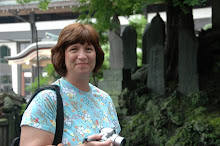
We arrived at the Naritasan Shinshoji Temple, a temple of Shingon Esoteric Buddhism, just in time to watch the Goma rite be performed. This is the most important service conducted at the Great Main Hall. In the hall is enshrined the image of Fudomyoo, which was believed to have been carved by Kobodaishi, the founder of the Shingon Buddhist sect.

The visitors to the service pray to Fudomyoo for fulfillment of wishes. Gomasticks are burnt by the chief priest. Wishes are written on the Gomasticks. As the pieces of wood go up in smoke, the wishes will be granted. Visitors can also have personal items blessed by having them waved through the smoke of the Gomasticks.
It was very interesting to watch the service. Naoki explained the Goma rite to me as it was being performed. It made much more sense to have someone explain the service as it is going on. I really appreciate the time Naoki took to explain the beliefs to me. He also told me he knew the head priest personally and had been to his house many times.
After the service was over, I wanted to buy some charms to keep family members safe. Naoki
 purchased a Gomastick for me to take home to keep my home safe. Then we walked around the park surrounding the temple. There were also many other cathedrals and halls in the park. The most beautiful building was the Great Pagoda of Peace built in the 1984. Messages and prayers for world peace made by world leaders are in a time capsule that is buried under the Great Pagoda of Peace.
purchased a Gomastick for me to take home to keep my home safe. Then we walked around the park surrounding the temple. There were also many other cathedrals and halls in the park. The most beautiful building was the Great Pagoda of Peace built in the 1984. Messages and prayers for world peace made by world leaders are in a time capsule that is buried under the Great Pagoda of Peace.It was a very pleasant walk. The traditional Japanese park had so many
 beautiful areas. I could have sat for hours watching the Kio fish in the ponds.
beautiful areas. I could have sat for hours watching the Kio fish in the ponds.We also ate lunch in Narita-shi. The street near the temple had many traditional Japanese shops and restaurants. We ate at a sushi restaurant. The man behind the counter did not speak English. Sumie told him I was from America. He made great efforts to try to get me to eat many different things. I tried types of sushi that I had not eaten yet; such as tuna belly, sea urchin, salmon eggs, squid, and a whole shrimp that was huge. I was supposed to also eat the head, but I couldn’t do it so Sumie ate it. She told me it was very good. Everything I tried was so good.

As we walked back down the street to the car, we did a little shopping. I bought a vase made out of a bamboo stock, an uncut ruby, and an uncut amethyst. I plan to make necklaces from the stones. I also bought two bracelets that were very reasonable priced. Naoki bought me shrimp flavored rice crackers to take home with me.
Our shopping took a little longer then it should and we had to quickly return home to pick up my suitcase. We did have time for afternoon tea before I left. It was very nice to sit and talk with Naoki and Sumie; such a huge difference from the day before. We talked about many different things and did not seem to have problems understanding each other. It was time to go at 2:30 p.m. and I wished I could stay longer. The time had gone so quickly.
We arrived at city hall at 3 p.m. as scheduled to find the others from my group saying good bye to their host families. The entire group was having difficulty saying good bye, no one wanted the experience to end. A group picture was taken and the last good byes were said. The group of teachers was escorted upstairs for a discussion with the Mayor of Katori City and the Superintendent of Katori City Board of Education.
The mayor explained that Katori City was formed 3 years ago by combining 4 municipalities, Sawara being one of them. The people voted to consolidate before the national government did it for them. At the national level they wanted to reduce the number of municipalities in Japan because they thought there were too many for the size of the country. They have reduced the number from 3,ooo to 1,800. The mayor talked about a master plan of a comfortable city to gather and work together. The citizens promote education to open doors for tomorrow with collaboration between school, home, and community. This is very similar to the belief of “a takes a village to raise a child” that was adopted by Scales Mound years ago.
The Superintendent of Board of Education talked about the biggest challenge for schools was curriculum and develop responsible children. He believed good capable children must have good capable teachers.
After an hour discussion, we left city hall to travel to Wakamatsu Honten, a traditional Japanese Inn and Spa, in Narita-shi. This is where we would spend our last night before returning to Tokyo for the final week.

No comments:
Post a Comment